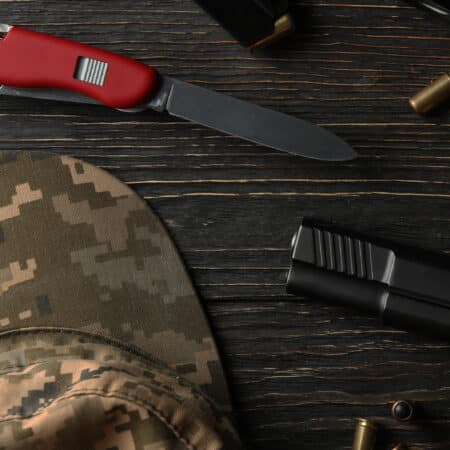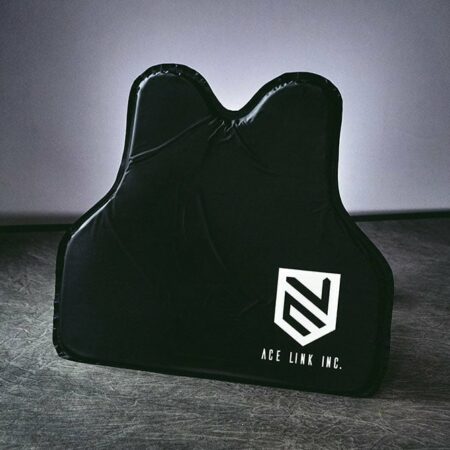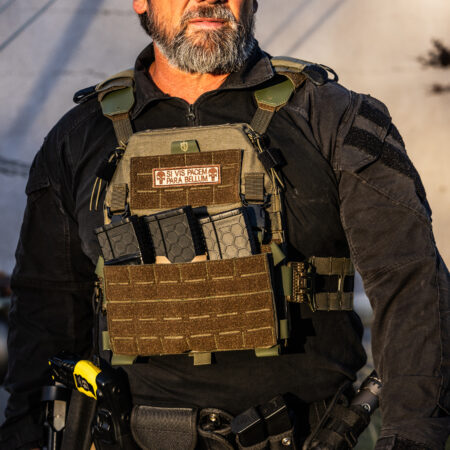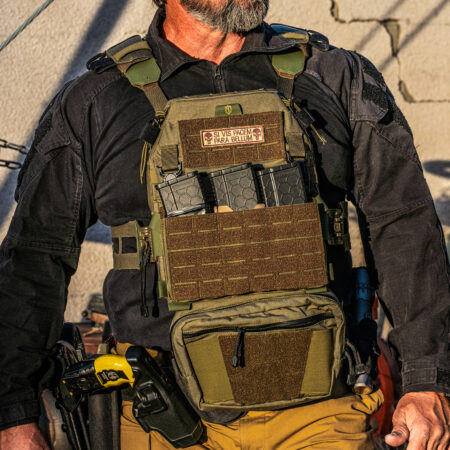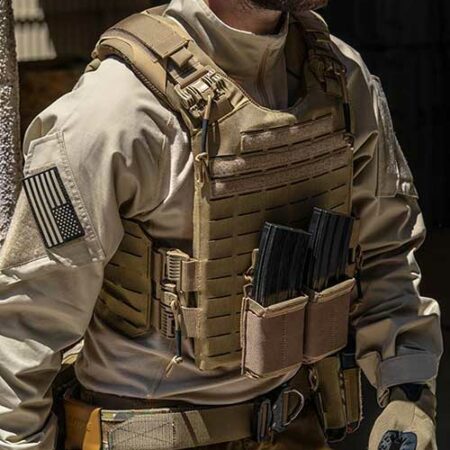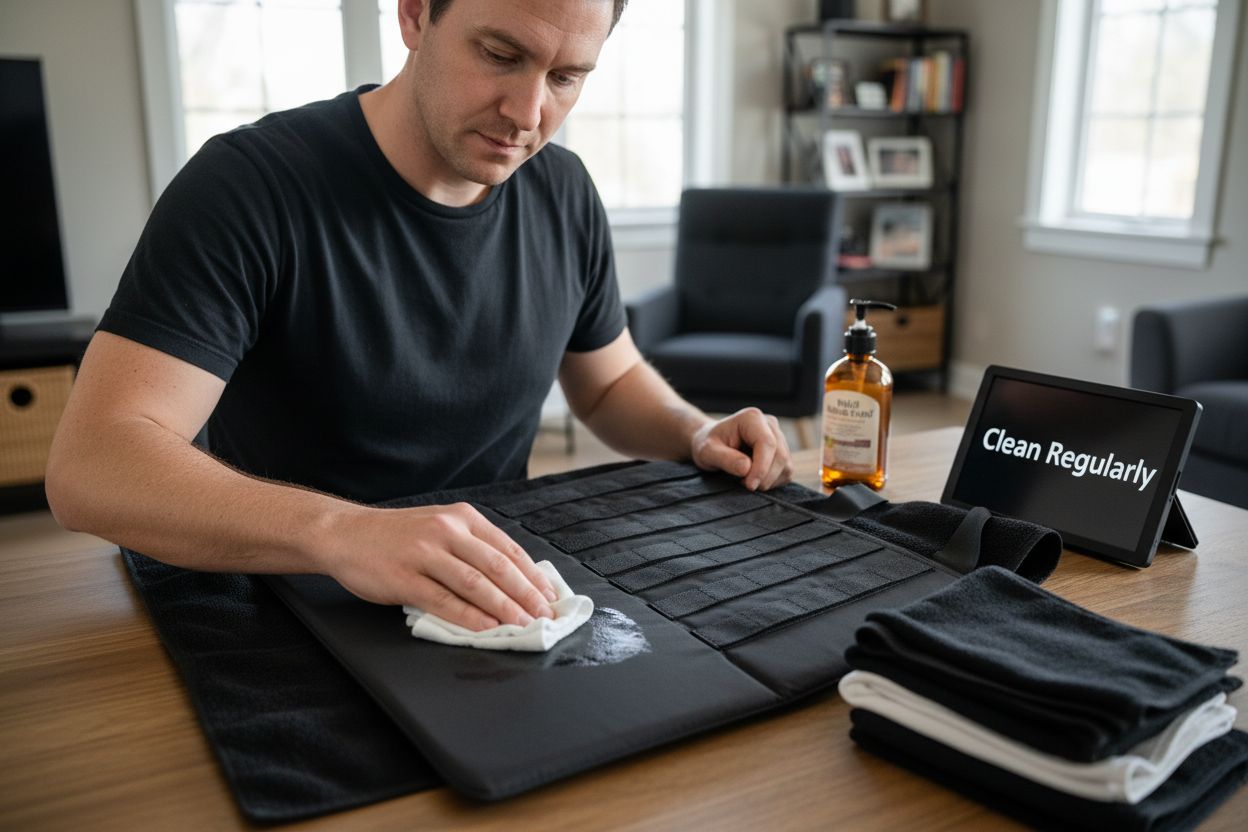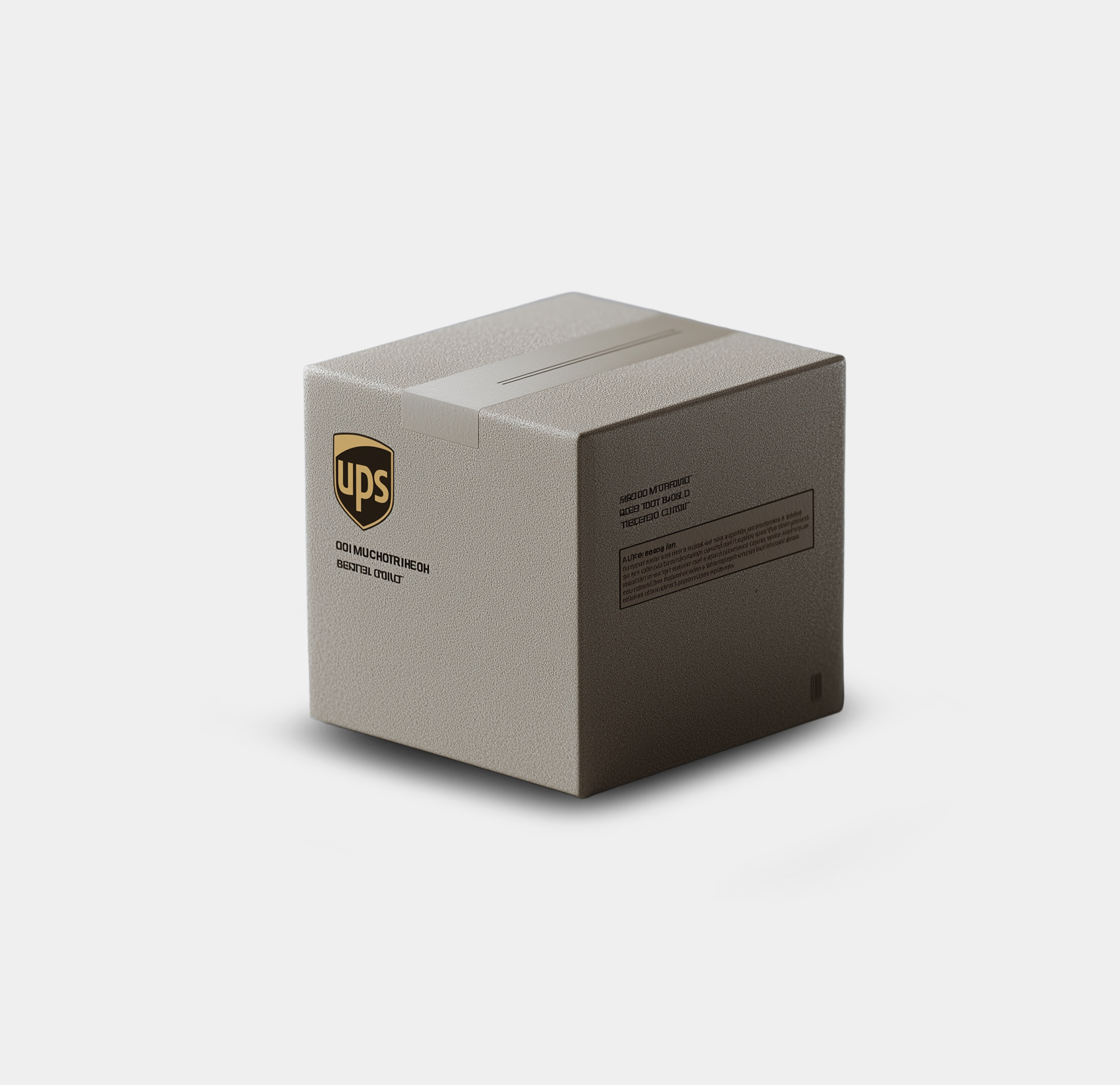- Table of Contents
- Quick Summary
- Step 1: Clean the Vest Regularly and Properly
- Step 2: Bulletproof Vest Care
- Step 3: Inspect the Vest for Damage Consistently
- Step 4: Bulletproof Vest Care - Avoid Extreme Conditions
- Step 5: Follow Manufacturer Care Instructions
- Protect Your Investment: Bulletproof Vest Care
- Frequently Asked Questions
- Recommended
Keeping your bulletproof vest in top shape might sound straightforward. Most people think a good wipe down and tossing it in the closet is enough. But studies show that machine washing or submerging ballistic panels can significantly reduce their protective performance. The real secret to staying protected is following a methodical care routine that most owners ignore.
Table of Contents
- Step 1: Clean The Vest Regularly And Properly
- Step 2: Store The Vest In A Controlled Environment
- Step 3: Inspect The Vest For Damage Consistently
- Step 4: Avoid Overexposure To Extreme Conditions
- Step 5: Follow Manufacturer Care Instructions
Quick Summary
| Key Point | Explanation |
|---|---|
| 1. Regular Cleaning is Crucial | Maintain protective capabilities by cleaning the vest with mild soap, avoiding harsh chemicals that could damage it. |
| 2. Store in a Controlled Environment | Keep the vest in a cool, dry place away from direct sunlight and extreme temperatures to prolong its lifespan. |
| 3. Consistent Damage Inspection | Regularly inspect the vest for signs of wear like fraying or punctures to ensure optimal protective performance. |
| 4. Avoid Extreme Environmental Exposure | Protect your vest from heat, cold, and moisture, which can degrade materials and compromise protection. |
| 5. Follow Manufacturer Care Instructions | Adhere strictly to care guidelines specific to your vest to maintain its warranty and functionality over time. |
Step 1: Clean the Vest Regularly and Properly
Maintaining the cleanliness of your bulletproof vest is crucial for preserving its protective capabilities and extending its overall lifespan. Regular and proper bulletproof vest care by cleaning prevents material degradation, removes potentially harmful contaminants, and ensures the vest remains in optimal condition for critical protection.
Begin by carefully removing the ballistic panels from the carrier. This separation allows you to clean each component without risking damage to the critical protective materials. Use a soft, damp cloth with mild, unscented soap to gently wipe down the panels, avoiding harsh chemicals or abrasive cleaning agents that could compromise the vest’s structural integrity. According to the National Institute of Justice Body Armor Guidelines, machine washing or submerging ballistic panels can significantly reduce their protective performance.
When cleaning the carrier, focus on spot cleaning areas with visible dirt or sweat stains. Use lukewarm water and a gentle detergent, applying minimal pressure to prevent fabric wear. Pay special attention to areas that frequently contact skin, such as inner lining and shoulder straps. Allow all components to air dry completely at room temperature, keeping the vest away from direct sunlight, heat sources, or mechanical dryers that could warp or degrade the materials.
Key cleaning practices to remember for bulletproof vest care:
- Always follow manufacturer-specific cleaning instructions
- Never use bleach, solvents, or harsh chemical cleaners
- Avoid direct heat or prolonged sun exposure during drying
- Inspect the vest for any signs of wear or damage during cleaning
After cleaning, perform a visual inspection to ensure no damage occurred during the process. Check for any loose threads, compromised stitching, or changes in material texture.
If you notice any irregularities, consult the manufacturer or a professional armor maintenance specialist to assess potential impacts on the vest’s protective capabilities.
Proper cleaning is not just about aesthetics; it’s a critical maintenance step that directly influences your vest’s reliability and performance in high-stakes situations. By dedicating time to careful, methodical cleaning, you’re investing in your personal safety and extending the functional life of your critical protective gear.

Step 2: Bulletproof Vest Care
Proper storage is a critical component of maintaining your bulletproof vest’s protective integrity and extending its operational lifespan. The environment in which you store your protective gear can significantly impact its long-term performance and reliability.
Create a dedicated storage space that maintains consistent temperature and humidity levels. Ideally, this means a cool, dry location away from direct sunlight and extreme environmental fluctuations. According to National Institute of Justice body armor guidelines, exposure to excessive heat or humidity can compromise the vest’s protective materials, reducing its effectiveness and potentially shortening its service life.
When storing your vest, always lay it flat on a smooth, clean surface. Avoid hanging the vest, which can cause stretching and permanent deformation of the protective panels. Never fold or compress the vest, as this can create permanent creases that weaken the ballistic materials and potentially create vulnerable spots in the protective coverage. If you must transport the vest, use a specialized protective bag designed to maintain its shape and protect it from external damage.
Key storage considerations of Bulletproof Vest Care:
- Choose a location with a stable room temperature (around 70 degrees Fahrenheit)
- Avoid storing near heat sources like radiators or direct sunlight
- Keep the vest away from damp areas or locations with high humidity
- Store in a clean, dust-free environment
Periodically inspect your stored vest for any signs of environmental damage. Look for subtle changes in the material’s texture, any discoloration, or signs of material breakdown. Check the elastic components and fasteners to ensure they remain flexible and functional. If you notice any unusual changes, consult the manufacturer or a professional armor maintenance specialist to assess potential impacts on the vest’s protective capabilities.
Remember that proper storage is not just about preserving the vest’s physical condition but maintaining its critical protective performance. By creating a controlled storage environment, you’re ensuring that your bulletproof vest remains ready to provide maximum protection when you need it most. Treat your protective gear with the same care and attention you would any life-saving equipment, understanding that its reliability directly impacts your personal safety.
Below is a quick-reference checklist to guide you through the essential practices for maintaining and extending the life of your bulletproof vest.
| Maintenance Task | What to Do | Frequency/Timing | Consequence if Ignored |
|---|---|---|---|
| Clean vest properly | Use mild soap, avoid submerging panels, air dry only | After significant use or soiling | Reduced protection, material wear |
| Store in controlled environment | Lay flat, avoid sunlight, keep in cool, dry area | After each use | Deformation, material degradation |
| Inspect for damage | Check stitching, look for fraying/punctures, check fasteners | Regularly (monthly or as needed) | Compromised protective capability |
| Avoid extreme conditions | Prevent exposure to heat, cold, and moisture | Ongoing, during use/storage | Material breakdown, lost warranty |
| Follow manufacturer’s instructions | Adhere to cleaning, storage, and replacement guidelines | Always | Voided warranty, reduced safety |
Step 3: Inspect the Vest for Damage Consistently
Regular and thorough inspection is a critical component of maintaining the reliability and protective performance of your bulletproof vest. By consistently examining your vest for subtle signs of wear, damage, or structural compromise, you can ensure its continued effectiveness in high-stakes situations.
Begin your bulletproof vest care inspection by carefully examining the vest under good lighting conditions. Look for any visible signs of damage such as fraying threads, small punctures, tears, or areas of material thinning. Pay special attention to high-stress areas like seams, fasteners, and regions that frequently contact your body or equipment. If you wear concealed armor like our protective t-shirt, the inspection process becomes even more critical due to the vest’s constant contact with skin and daily movement.
Critical areas to examine during your inspection include the ballistic panels, carrier fabric, elastic components, and all attachment mechanisms. Run your fingers gently across the surface, feeling for any irregularities or changes in material texture that might not be immediately visible. Look for signs of delamination where protective layers might be separating, which can significantly compromise the vest’s protective capabilities.
Key inspection checkpoints:
- Check for loose or broken stitching
- Inspect panel edges for fraying or material breakdown
- Examine hook and loop fasteners for reduced grip
- Look for discoloration or material degradation
- Verify all attachment points remain secure
Document your findings during each inspection. Create a simple log that tracks the date of inspection, any observations, and potential areas of concern. This documentation helps you track the vest’s condition over time and provides a historical record that can be valuable for maintenance or potential warranty claims.
If you discover any significant damage during your inspection, do not attempt to repair the vest yourself. Professionally manufactured body armor requires specialized repair techniques, and DIY fixes can compromise its protective integrity. Contact the manufacturer or a certified armor maintenance specialist to assess and address any identified issues.
Consistent inspection is more than a maintenance task; it’s a critical safety protocol. By dedicating time to carefully examining your bulletproof vest, you’re ensuring that your primary line of personal protection remains reliable, functional, and ready to perform when you need it most. Treat this inspection process with the same level of seriousness you would any critical safety equipment.
Use this troubleshooting table to quickly identify common bulletproof vest maintenance problems, their likely causes, and recommended actions based on the information in this article.
| Problem Noticed | Possible Cause | Solution/Action |
|---|---|---|
| Fraying threads or seams | Wear, incorrect cleaning, material fatigue | Discontinue use; Contact manufacturer or armor specialist |
| Punctures or surface thinning | Physical damage, accidental impact | Stop using the vest; Request professional inspection |
| Velcro/fastener loss of grip | Dirt buildup, material aging | Clean per instructions; Replace if necessary |
| Musty or odd odor | Prolonged moisture, improper storage | Dry thoroughly; Store in dry area; Replace if moldy |
| Discoloration or stiff panels | UV/heat exposure, chemical damage | Keep out of sun/heat; Consult manufacturer if persists |
| Elastic loss or stiffness | Age, exposure to extreme temps/moisture | Replace straps or consult manufacturer |
Step 4: Bulletproof Vest Care – Avoid Extreme Conditions
Protecting your bulletproof vest from extreme environmental conditions is crucial for maintaining its long-term performance and structural integrity. Exposure to harsh conditions can rapidly degrade the protective materials, compromising the vest’s ability to provide critical protection when you need it most.
According to National Institute of Justice research, ballistic materials are particularly sensitive to environmental stressors. High temperatures can cause significant damage to the protective panels, breaking down the molecular structure of the ballistic fibers and reducing their impact resistance. Avoid leaving your vest in direct sunlight for extended periods, especially in vehicles or outdoor settings where temperatures can quickly rise to destructive levels.
Similarly, extreme cold can create brittleness in the vest’s materials, making them more prone to cracking or losing flexibility. Moisture presents another significant challenge, as prolonged exposure can lead to material degradation, mold growth, and potential structural weakening. Professional users working in challenging environments must be particularly vigilant about protecting their vest from these environmental threats.
Key environmental protection strategies:
- Never store the vest in direct sunlight
- Avoid leaving the vest in vehicles during extreme weather
- Keep the vest away from direct heat sources
- Protect the vest from prolonged moisture exposure
- Use protective covers when working in challenging environments
Consider investing in protective gear bags or covers that provide an additional layer of environmental protection. When working in extreme conditions, such as desert environments or arctic regions, take extra precautions to shield your vest from direct environmental exposure. This might mean using protective outer layers or carefully managing your equipment during transportation and storage.
Pay special attention to your vest’s exposure during transportation and storage. Quick temperature changes can be particularly damaging, causing materials to expand and contract rapidly, potentially compromising their structural integrity. If you must move your vest between significantly different environmental conditions, allow it to acclimate gradually and inspect it thoroughly for any signs of stress or damage.
Think of your bulletproof vest as a precision instrument rather than simple clothing. Each exposure to extreme conditions incrementally reduces its protective capabilities. By being proactive and mindful of environmental threats, you’re not just maintaining a piece of equipment you’re preserving a critical layer of personal protection that could potentially save your life in high-risk situations.
Step 5: Follow Manufacturer Care Instructions
Manufacturer care instructions are the definitive guide to maintaining your bulletproof vest’s performance and protective capabilities. These specialized guidelines are not generic recommendations but precise protocols developed specifically for your vest’s unique materials, construction, and ballistic protection level.
According to expert body armor maintenance guidelines, each vest has a unique set of care requirements tailored to its specific design and materials. Carefully preserve and review the original documentation that came with your vest, as this contains critical information about maintenance, cleaning, storage, and potential limitations specific to your protective gear.
Pay close attention to the recommended replacement schedule outlined by the manufacturer. Body armor has a finite service life, and continuing to use a vest beyond its recommended operational period can significantly compromise your personal safety. Professional users in high-risk environments should be particularly meticulous about tracking their vest’s age and performance history.
Key manufacturer instruction considerations:
- Verify the recommended cleaning method for your specific vest model
- Note the exact storage temperature and humidity requirements
- Understand the recommended inspection frequency
- Track the manufacturer’s suggested replacement timeline
- Confirm warranty conditions and maintenance requirements
Maintain open communication with the manufacturer if you have specific questions about your vest’s care. Many manufacturers provide customer support channels specifically designed to address maintenance inquiries. Document your interactions, keeping records of any guidance received about your specific vest model.
Be aware that modifying the vest or deviating from manufacturer instructions can void warranties and potentially compromise the vest’s protective capabilities. Do not attempt unauthorized repairs or alterations, as these can create weak points that reduce the vest’s ballistic protection. If significant damage occurs, consult the manufacturer or a certified armor maintenance professional for proper assessment and potential replacement.
Think of manufacturer care instructions as a comprehensive roadmap for preserving your personal protective equipment. By following these guidelines meticulously, you’re not just maintaining a piece of gear you’re ensuring a critical layer of protection designed to safeguard your life in high-risk situations. Treat these instructions with the same level of respect and attention you would give to any life-saving equipment.
Protect Your Investment: Bulletproof Vest Care
You have just learned about bulletproof vest care: regular cleaning, proper storage, and careful inspection are essential steps to maximize the lifespan of your bulletproof vest. But if your gear is made with lower quality materials or does not meet high protection standards, even perfect care routines cannot make up for those weaknesses. The truth is, your commitment means more when your equipment can keep up with real-world wear, environmental stress, and the demands of daily duty.
Ready to upgrade to armor that is engineered for durability, comfort, and top-tier protection? Visit AcelinkArmor.com to explore premium bulletproof vests, advanced concealed armor options, and trusted tactical gear designed for professionals and serious users alike. Take control of your safety and extend the value of every purchase. Your next move could make all the difference—discover your perfect fit now at AcelinkArmor.com.
Frequently Asked Questions
How often should I clean my bulletproof vest?
You should clean your bulletproof vest regularly, focusing on following the manufacturer’s guidelines. Typically, it’s best to clean it after significant use or when it shows visible dirt or stains.
What is the best way to store my bulletproof vest?
Store your bulletproof vest in a cool, dry environment with consistent temperature and humidity levels. Lay it flat on a smooth surface without folding or hanging it to avoid deformation.
How can I tell if my bulletproof vest has been damaged?
Inspect your vest under good lighting for visible signs of wear, such as fraying threads, punctures, or material thinning, particularly in high-stress areas. Document any findings and consult the manufacturer if you notice significant damage.
Why are manufacturer care instructions important for my bulletproof vest?
Following manufacturer care instructions is crucial, as these guidelines are designed specifically for your vest’s unique materials and capabilities. Deviating from these instructions can compromise its protective performance and void warranties.
Recommended
- Signs That It’s Time to Replace Your Ballistic Panels – Ace Link Armor
- Concealed Armor T-Shirt Level IIIA – Ace Link Armor
- Concealed Body Armor T-Shirt Level 3A – Ace Link Armor
- Dual-Protection Vest for Stab and Ballistic Resistance – Ace Link Armor



